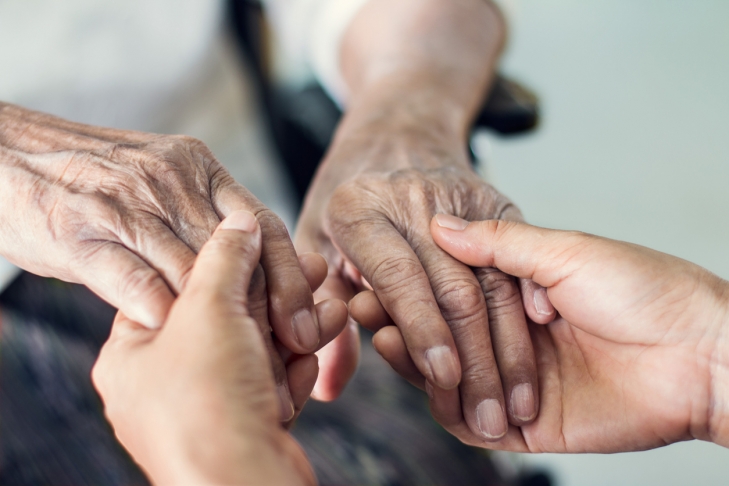There are countless senior citizens who don’t want to go into an assisted living accommodation or a home – the latter still having a stigma about it. Neither do they want to be a burden on their family members or have to adjust to a totally different way of life. The hurly-burly and bustle of living in a house that probably has young people and children can get too much for them. Hence, their desire to age in the environment they are familiar with… But, how can their family and friends ensure that doing so is a safe and healthy choice?
The possibility of social isolation…
It is possible, and often probable, that people who live alone are also lonely. This is true at any age but more so amongst seniors who live alone. This, coupled with feelings of isolation, can impact senior health dangerously. So how can we prevent this from happening? As a large chunk of the world’s population, the baby boomers, are coming to realize, ending up living on one’s own is a very real possibility for many – especially for those who are childless or whose children live far away. It could well be argued that living alone does not necessarily mean being socially isolated but it certainly is a critical factor – as is the lack of engagement in social activities.
Support systems
One of the primary support systems that will make them more independent, and more in charge of their own lives, is technology. The right tools and gadgets will help an older person to maintain health, safety and independence at home. Skipping any of these can result in depression, isolation and poor health. Bearing in mind the proven risks and the growing frequency of this issue we should be asking ourselves: how can we encourage social interaction amongst elders? Let’s look at some of the ways we can prevent social isolation and empower our aging loved ones to live lives that are secure, safe, healthy and socially active.
Mobility is of critical importance
Denied access to transportation, seniors are left socially isolated. Lack of a car, a driving license, or convenient and safe transportation choices become major road blocks in their ability to move around and interact at social forums. Any option that enables our elders to be self-reliant in matters of transport will help them immeasurably as regards social integration.
The need to feel needed
Elders who are driven by a sense of purpose, of feeling needed or in a position to help others, stay healthier and happier. A hobby or activity that keeps them busy or motivated also prevents your loved elder from giving in to feelings of isolation. There are a multitude of hobbies and interests that involve social interaction – such as bridge, chess, other card games, group outings to places of interest – while also improving social health and emotional balance.
Using technology to empower seniors
- Engage with the world outside: Technology offers seniors unlimited opportunities to connect with friends and family for long conversations or quick updates — necessary as some seniors suffer from isolation and depression. These include:
- Simplified computers: Provide them with easy-to-use computers with touch-screen capabilities
- Computer-free emails: Explore options that allow users to receive emails and photos without a computer
- Smart phones vs. simple cell phones: Smart phones can be of great help but that depends on the level of a senior’s interest in technology. Easy to use cell phones are the best when it involves keeping in touch with the outside world
- Amplified cell phones: These are great for seniors with hearing impairment or who have trouble seeing small screens
- Video chats: For more tech-savvy seniors, suggest programs that allow them to easily see and speak with family and friends
- Maintaining good health Managing medication and maintaining mobility are the two major components in preserving physical health at home. And there are many ways of doing so, including:
- Medication reminders: Explore medication management systems that can issue reminders, dispense meds, monitor medication usage and notify caregivers when doses are missed
- Pill dispensers: Instead of an entire system, look into automated pill dispensers that remind seniors when to take a dose and what amount to take
- Health management: Monitor blood pressure, pulse and heartbeat, check blood glucose levels and more…all within the four walls of the home
- Nutrition guides: Seniors who live alone often have problems planning meals and getting the nutrition they need. Use technology to keep track of what they should be eating and when
- Keep fit activities: Vital for seniors – yoga classes, walks in parks and traffic-free pathways – will help them to stay mentally and physically healthy
- Safety first: As bodies and minds age, seniors may experience new mental and physical challenges. It’s more common for seniors to fall or wander off. Look into technologies that can help keep seniors safe when they live at home. Such as:
- Home monitoring systems: These systems operate on strategically placed
sensors and cameras, from motion detectors to leak or flood detectors to item-specific detectors on doors, beds, toilets, chairs, etc. You can monitor the senior’s daily activities, and more importantly, receive notifications when the system senses a disruption
- GPS tracking systems: These can alert the authorities and help locate a
missing person quickly – especially in cases where dementia or Alzheimer’s are concerned. Most of these systems operate by signal exchanges from satellites and nearby cell towers to locate missing elders
- Home healthcare
A wide range of healthcare services can be made available at their place of residence, including nursing and medical aid, in the event of an unexpected injury, surgery or illness. Popularly referred to as Home Care, it is normally less expensive and more convenient than any care you can get in a hospital or nursing home.
In India, as elsewhere, older people come from diverse social, economic, ethnic and religious backgrounds… with different ideas about what makes a home. But all of them want safety, care, comfort and a feeling of fitting in, so that they really do feel at home – where the fabric of life is familiar and where respect for their special needs is a given.


